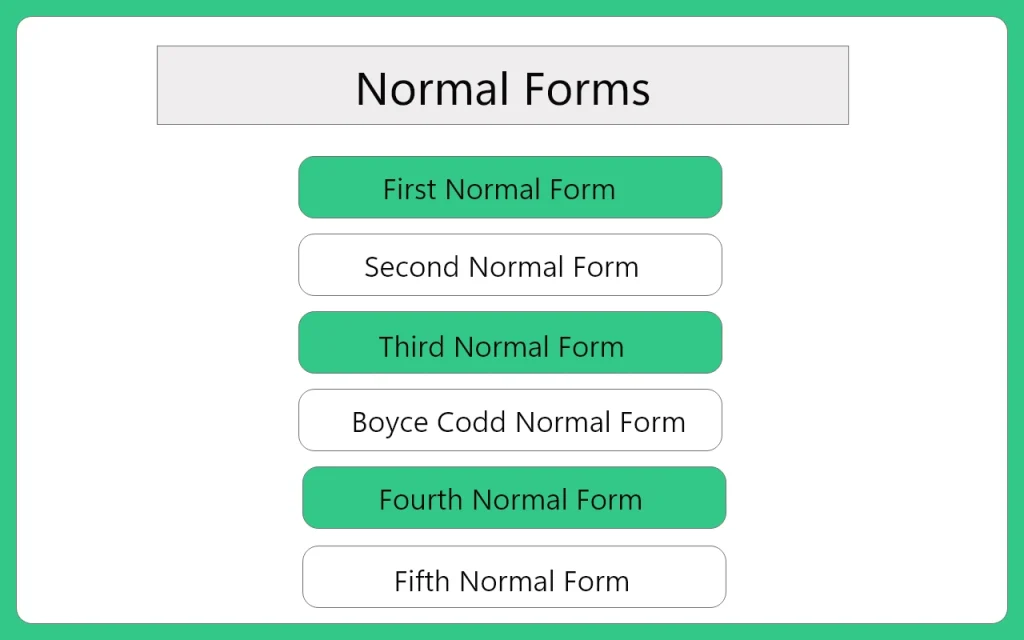Normal Forms in DBMS
About Normal Forms in DBMS
In this article, we will learn about Normal Forms in DBMS.
Normalization is a process of breaking a table into you still optimized ones so that they are free from all problems faced due to insertion updation and deletion of data in the table

There are 5 of there are five different levels of Normal forms let’s see a brief introduction about each normal form
First Normal Form(1NF)
- A table is said to be in First Normal Form if it is free from
multivalued or composite attributesi.e each attribute should be atomic - A multivalued attribute is nothing but it contains more than one value in a single cell.
- A table is said to be in First Normal Form if it is free from
Second Normal Form(2NF)
A table is said to be in Second Normal Form if it satisfies the following two properties
1. It must be in First Normal Form
2. It should be free from all kinds of partial dependencies.
Third Normal Form(3NF)
A table is said to be in Third Normal Form if it satisfies the following properties
- If it is in
second normal formand - There is no
transitive dependency.
- If it is in
BCNF(Boyce Codd Normal Form)
The table is said to be in BCNF if it satisfies the following properties
- It should be in
3nf - For every functional dependency, A-> B, A must be a superkey i.e in any functional dependency
LHS attribute must be a Superkey.
- It should be in
4NF(Fourth Normal Form)
The table is said to be in the 4th Normal Form it is it satisfies the following properties
- It should be in
Boyce Codd normal form(BCNF) - It is free from
multivalued dependency
- It should be in
Prime Course Trailer
Related Banners
Get PrepInsta Prime & get Access to all 200+ courses offered by PrepInsta in One Subscription
Get over 200+ course One Subscription
Courses like AI/ML, Cloud Computing, Ethical Hacking, C, C++, Java, Python, DSA (All Languages), Competitive Coding (All Languages), TCS, Infosys, Wipro, Amazon, DBMS, SQL and others







Login/Signup to comment